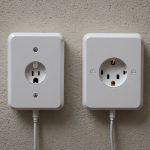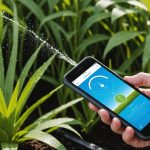Overview of Smart Plugs
Smart plugs have emerged as essential components of smart home technology, effortlessly blending convenience with innovation. At their core, smart plugs are devices that allow users to control any plugged appliance remotely. Through a smartphone app, you can activate or deactivate devices from anywhere with an internet connection, enhancing the versatility and control of your home environment.
The significance of integrating smart plugs into home automation systems lies in their ability to make your regular appliances smarter. This adaptation plays a pivotal role in the overall efficiency of your smart home technology infrastructure. By transforming basic electronics into interactive devices, smart plugs support a unified control system.
Additional reading : Comprehensive Manual for Installing a Smartphone-Integrated Smart Home Water Leak Detection System: Your Step-by-Step Blueprint
Among the basic benefits of smart plugs is the prospect of enhanced energy efficiency. With the ability to schedule appliance operations, users can reduce energy consumption and save on electricity bills. Moreover, smart plugs bring convenience to daily routines—imagine having a warm home as you arrive or turning off forgotten devices with a simple tap.
In essence, smart plugs serve as the gateway to a connected living environment, offering both convenience and sustainability. Users are encouraged to explore this innovative facet of home automation.
Tools and Materials Needed for Setup
Setting up a smart plug doesn’t require a wealth of technical knowledge, but knowing the right tools for a smart plug setup can make the process smoother. You will generally need a basic toolkit, which includes a screwdriver, measuring tape, and possibly a power strip to organise the wiring neatly. Additionally, double-check the plug’s voltage rating to match it with your current power outlet specifications to prevent overload.
There are certain materials for a DIY smart home setup that you should consider to ensure efficiency. These often include extension cords for distant outlets, a voltage tester for safety checks, and adhesive strips to keep cables in order. Safety considerations should always be a top priority during your setup. Always switch off the power to your outlet before beginning any installation, and carefully read the manual that accompanies your smart plug.
By preparing the right tools and materials beforehand, you not only ensure the process is seamless but also greatly reduce the risk of settings errors or safety hazards. These preparatory steps are essential for a successful smart plug implementation in your home.
Selecting Compatible Smart Plugs
When considering compatible smart plugs, it’s key to assess their features, especially in a smart home technology ecosystem. Look for Wi-Fi connectivity, ease of use with smartphone apps, and compatibility with voice assistants like Alexa or Google Assistant. These features ensure seamless home automation integration. Additionally, consider energy monitoring capabilities, which provide insights into an appliance’s power usage.
Popular brands like TP-Link, WeMo, and Amazon offer models that are highly rated for routine home setups. Their devices often integrate flawlessly with existing smart home networks, providing reliability and efficiency. Before purchasing, it’s wise to verify that the plug’s specifications align with your home environment. This includes checking voltage requirements and ensuring compatibility with your home network’s frequency (typically 2.4GHz Wi-Fi).
To determine whether a smart plug is suitable for your needs, review its app compatibility with your smartphone and its operating system requirements. It’s also beneficial to read customer reviews to identify any potential issues. By following these guidelines, selecting a smart plug that enhances your smart home experience becomes a straightforward process.
Step-by-Step Setup Process
Integrating smart plugs into your home automation system can be quite straightforward with a clear guide. Here’s a comprehensive smart plug setup guide to ease the process.
Installing the Smart Plug
Installation begins with plugging the smart plug into an electrical outlet. Ensure the outlet’s power is off during this initial stage for safety. Most smart plugs can accommodate varied appliances, but verify compatibility with your device’s voltage needs beforehand.
Connecting to Wi-Fi
Once installed, the next step involves connecting to Wi-Fi. Ensure your home network operates on 2.4GHz, as smart plugs typically don’t support 5GHz. Use the accompanying app to scan for available networks and enter your Wi-Fi credentials. A successful connection should be indicated by a stable LED light on the plug.
Pairing with Your Smartphone
The final step is pairing with your smartphone. Download the smart plug’s compatible app—commonly available for both Android and iOS. Follow on-screen prompts to add your device. Once paired, you’ll gain control over your appliances remotely, enjoying the seamless convenience of smart home technology.
This systematic approach facilitates a smooth DIY smart plug integration, empowering users to effortlessly navigate the setup process.
Troubleshooting Common Issues
Smart plug troubleshooting can sometimes be necessary to resolve typical setup issues. Before delving into solutions, verify whether your plug is correctly installed in a home automation system.
Common Connectivity Problems
A frequent obstacle is poor Wi-Fi connectivity, resulting in interrupted service. Ensure that your smart plug is within range of your router. If connection issues persist, resetting the plug and reconfiguring it using its dedicated app may solve the problem.
Resolving Compatibility Issues
Compatibility problems can also arise, particularly when integrating new smart plugs into an existing smart home technology network. Verify that all devices operate on the same frequency (commonly 2.4GHz) and are compatible with each other’s applications.
Support Resources
For advanced smart plug troubleshooting, consult the manufacturer’s support resources. Many brands provide detailed online guides and customer service helplines. Should persistent issues occur, these resources can facilitate more comprehensive troubleshooting, ensuring that your smart plugs function seamlessly within your home automation setup.
Exploring Use Cases and Benefits
Smart plugs unlock a realm of possibilities that can transform everyday routines into efficient and enjoyable experiences. One notable application of these devices is in energy conservation. By allowing scheduled operations, smart plugs reduce unnecessary power usage, which helps you save on electricity bills. For instance, you can automate lights to switch off during daylight, optimising consumption.
In terms of home security, smart plugs play a crucial role. They can simulate presence by turning lights on and off at random intervals while you’re away, deterring potential intruders. This automatic operation enhances the security of your home effortlessly.
Practical Applications
Everyday activities that benefit from smart plugs include managing entertainment systems, kitchen appliances, and even outdoor lighting. Remote control via a smartphone app means you can start your coffee maker before getting out of bed or illuminate your garden for an evening soirée with a tap.
With such versatile applications, exploring the potential of smart plugs truly enhances your smart home technology experience, offering convenience, efficiency, and peace of mind tailored to modern life. By incorporating smart plugs, your home becomes more connected, user-friendly, and secure.
Visual Aids for Setup
Visual aids significantly enhance the smart plug setup process by providing clear, easy-to-follow instructions. Integrating different types of visuals like infographics, screenshots, and comparison charts can demystify complex steps, making the installation user-friendly.
Infographic of Steps
An infographic outlining each step can serve as a quick-reference guide, highlighting crucial actions like initial plug-in, Wi-Fi connection, and device pairing. Each graphic labels critical components, pointing out key visual cues for successful home automation integration.
Screenshots from Smartphone App
Screenshots from the smart plug’s app are invaluable for understanding the app’s layout and navigation. Detailed visuals walk users through the interface, indicating where to input Wi-Fi credentials and how to activate the smart plug. This boosts confidence and accuracy in executing app-based tasks.
Comparison Chart of Smart Plugs
A comparison chart aids in selecting compatible smart plugs by displaying features side-by-side. Users can evaluate specifications such as energy monitoring, compatibility, and operating systems supported, ensuring an informed decision. Charts simplify technical data, helping users quickly grasp key differences between available models.











